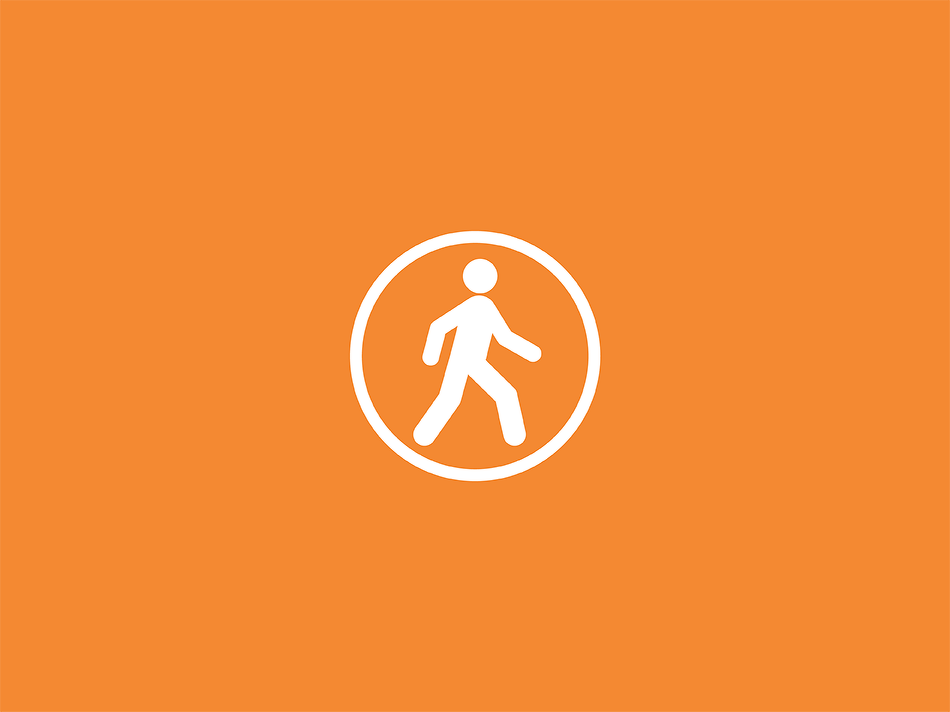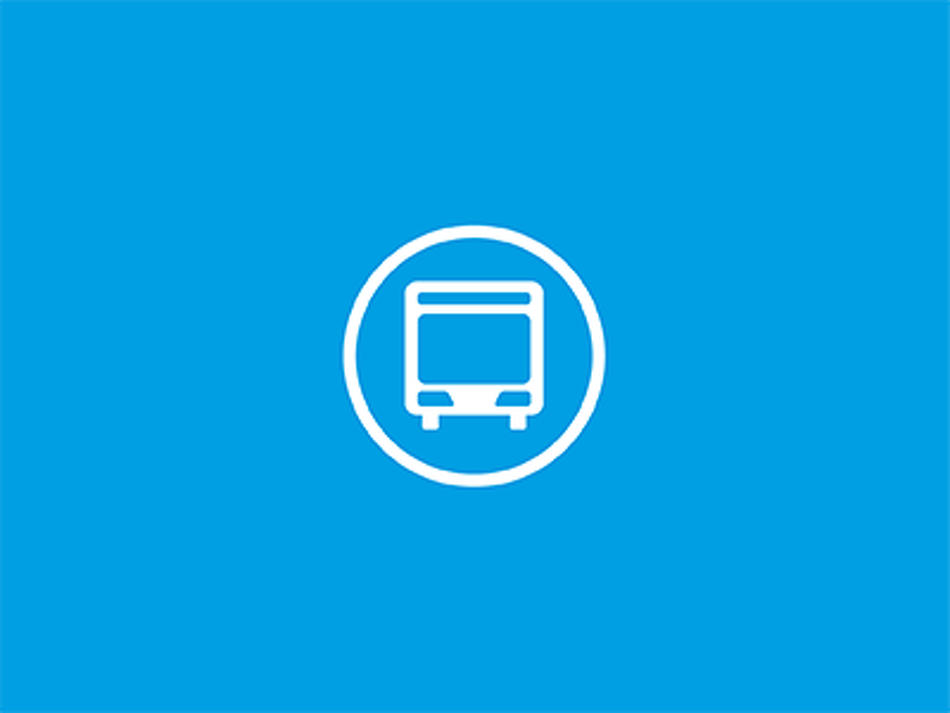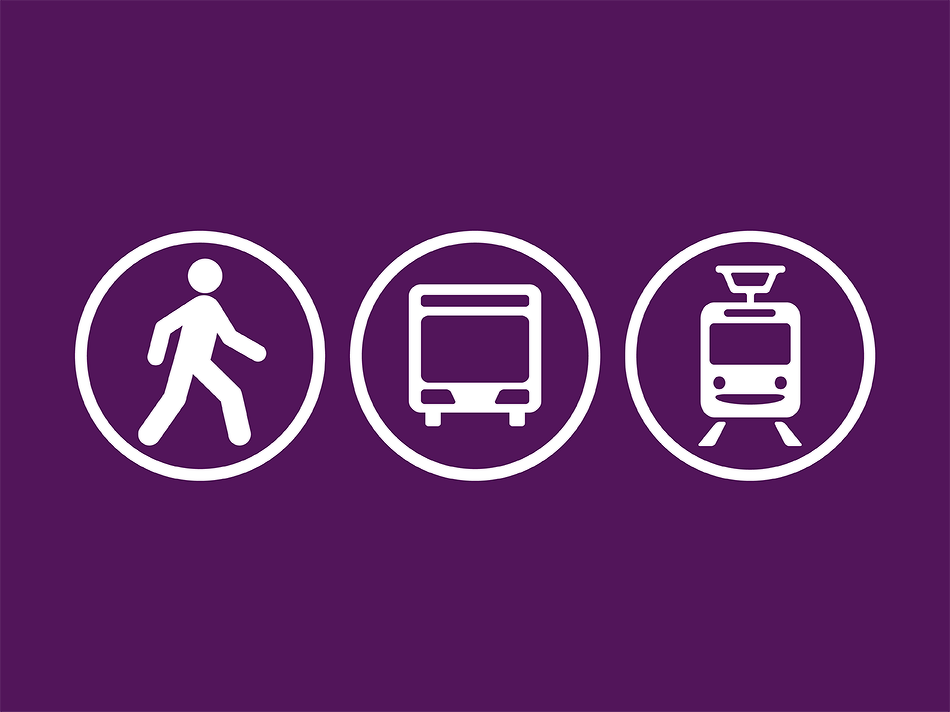Accessible pedestrian transport
In the course of the population census as of 2011, a number of circa 73,000 persons with different types of disabilities were living and working in Budapest, and also used Budapest’s public transport services and public spaces as much as they could. In Hungary, the population number of persons with different types of disabilities has reached 490,000. Considering the fact that also family members and accompanying persons travel together with disabled persons, the issue of accessibility could affect an even higher number of passengers.

Why is it a key aspect that pedestrians should not face transport barriers?
Development of transport infrastructure is not only the interest of persons with physical impairment, anymore. We must take into account also passengers with prams or any rolling luggage, persons with sensory impairment, seniors who get around with difficulties and children to the same extent. In view of this information, it can be declared that accessibility of pedestrian routes have an impact on millions of passengers.
In the course of the design process, if we take into consideration not only the standards but also the demands of the society’s certain groups, it will not conflict with the interests of the majority. On the contrary, these possibilities imply an extra comfort function for everyone, Such as,
- using lifts in the undergrounds,
- wider pedestrian spaces,
- FUTÁR display with voice-based information at platforms, in the undergrounds and at Customer Service Centres.
Accessibility-related developments made by BKK so far
BKK always took disabled persons’ aspects into account during the reconstruction works and also during the design, construction and refurbishment - reconstruction works of stops and stations.
- Tactile paving
Textured pavement surface patterns, such as striped and dotted tactile signs can often be found at stops and ahead of pedestrian crossings, which assist the mobility of the blind and visually-impaired persons. When refurbishing pavements, intersections and stops, BKK places tactile indicators on the road surface to help the mobility of persons with visual impairment.
- Audible traffic lamps at intersections
The audio-and voice-based traffic lamps, which signal for the blind and visually-impaired persons when they can cross the pedestrian crossings safely are another tool that are meant to help the mobility of the blind and visually-impaired persons.
In Budapest, there are currently such remotely-controlled traffic lamps installed at hundreds of pedestrian crossings, which switch to the audio mode, only when the visually-impaired persons switch on the device by their remote controller.
Please find the list of the audible traffic lights here.
BKK installs passenger information systems that can be activated with a remote controller to BKK’s FUTÁR Journey Planner (state-of-the-art, real-time traffic management and passenger information system) to be found at stops. The design guide related to accessibility of stops can be downloaded at BKK’s website.
- Accessible stops
When designing stops, handrails and tactile elements were placed and raised platforms adjusted to vehicles were built. Among the stops of tramlines, the stops of tramlines 1, 3, 4 and 6 (except for the Boráros tér stop of tramline 6) are barrier-free stops. Also the tram stops along Bem rakpart, Bartók Béla út, Fehérvári út, Villányi út and Alkotás utca are step-free stops.
All of the metro stations along metroline M4 are step-free stops, the following stops along metroline M2 are step-free: Örs vezér tere, Pillangó utca and Puskás Ferenc stadion and the following stations are step-free along metroline M3: Újpest-központ, Újpest-városkapu, Gyöngyösi utca, Forgách utca, partially the Göncz Árpád Városközpont, Népliget, Ecseri út, Pöttyös utca and partially the Határ út.
- Lowered curbs
When refurbishing and constructing pedestrian crossings, BKK pays particular attention to creating lowered curbs or curb ramps , providing easier access for wheelchair users, parents with prams, the elderly and road users with reduced mobility. During the refurbishment works of roads, BKK applies lowered curbs with the proper tactile elements at each transport junction and intersection.
- Customer Service Centres
BKK paid particular attention to accessible solutions even during the establishment of customer service centres. Tactile signals are displayed on the floor on the premises of customer service centres and for wheelchair users, lower, more convenient counters have been installed.
Cooperation with stakeholders
We truly believe that issues can be solved solely jointly with persons who are affected by the issues in question. Thus, in case of certain projects BKK has tightly cooperated with stakeholders both during the preparatory and consultation periods, which represent interests of persons with special needs. Among others, with the following institutions:
- National Council of Associations of Persons with Disabilities (FESZT)
- National Association of Autists (AOSZ)
- Hungarian Federation of the Blind and Partially Sighted (MVGYOSZ)
- National Federation of Disabled Persons' Associations (MEOSZ)
- Budapest Association of Persons with Physical Disability (MBE)
- Central Hungarian Regional Association for the Blind and Visually Impaired (VGYKE)
- Hungarian Association for Persons with Intellectual Disability (ÉFOÉSZ)
- Hungarian Association of the Deaf and Hard of Hearing (SINOSZ)
BKK has participated in the INCLUSION Research and Development project, which aims at the improvement of service provided to customers with special needs. BKK utilises the Training Material compiled in the course of the project in the trainings of staff working at BKK Centre for Budapest Transport and at The Budapest Transport Privately Held Corporation (BKV) who often get in work-related contact with customers.
Furthermore, BKK takes part in the DANOVA Research-Development project started on 1 July 2020, which aims at the assistance of the blind and the visually-impaired persons access international transport hubs.
The Future
We are quite aware of the fact that there is still a long way to go in the accessibility of Budapest’s transport network. Developments are never ever slowed down by intentions, but primarily by the funds-related need in the amounts of millions of serious technical challenges and certain interventions. Yet, BKK’s experts are doing their best on a continuous basis to achieve as soon as possible the goals set jointly.
Primarily, vehicles were in the focus of the comprehensive accessibility-related assessment made previously. In the future, such an assessment will be required, which will examine also the compatibility of vehicles and stops. Besides,
- where there are undergrounds, also crossing-related options on the surface must be provided,
- along longer routes, where only walking is possible, BKK is planning to install street furniture (benches and other resting places),
- BKK plans to design pavements wider than the minimum specified in the standard.
- BKK develops information boards, signage and other information-related materials (e.g. pictograms, short and understandable texts) dedicated to pedestrians.
During the reconstruction works of metroline M3, BKK must strive to achieve that platforms at all stations could be accessible. Accessibility of platforms at stations along metroline M3 can be realised either by the installation of lifts or by the creation of routes that can be more and better used compared to the currently-used ones.
During the reconstruction works of metroline M2, the accessibility of its deep-level stations were not realised. Assessments were analysing the usage of slanting lifts in operation at certain stations during the reconstruction works being in process on metroline M3 and also the construction of lifts providing direct surface connection. Accessibility of one station each could cost billions HUF, depending on the applied method. Our objective is to seek funds that can be granted for accessibility-related developments.
It is a paramount importance for BKK to take each and every demand and need into account and also to get notified about accessibility-related issues from our customers. Therefore, we are more than happy to receive your suggestions and opinions on accessibility that you can drop, by sending an e-mail to the e-mail address: bkkbkk.hu or by sending a mail to the postal address: 1075 Budapest, Rumbach Sebestyén utca 19–21., HUNGARY
Accessible buslines in Budapest
Currently, over 90% of the buses running in Budapest are low-floor vehicles. At night and during daytime on every weekend only low-floor buses are in operation in Budapest.
The departure times of low-floor vehicles are underlined in the timetables to be found at BKK’s website (except if all buses are low-floor on a given route.)

On information boards, you can read the following explanations:
- “Low-floor service (all vehicle)” - meaning that all of the vehicles running on the route of the line are low-floor vehicles.
- “Low-floor service is available” - meaning that a maximum of 50% of barrier-free vehicles is available, compared to the vehicles departing during a whole day/week.
- “Mostly low-floor vehicle in service” - meaning that over 50% of the vehicles are low-floor vehicles running on the line.
Transporting one wheelchair is possible on board the following Telebuses:
Wheelchair users and parents with prams can board also low-floor buses through the door indicated with a pictogram leading to the designated area where the wheelchair can also be secured.
Pictograms
Accessible lines are marked by pictograms.
| | Only accessible vehicles are operating on the line. |
| | Wheelchair-accessible lift (at metro station) |
| | Partially accessible vehicle |
| | Accessible vehicle or priority seat (for passengers with reduced mobility) |
BKK’s downloadable journey planner application available at go.bkk.hu displays the quickest and, if required, accessible routes by tracking the exact location of vehicles and considering the actual transport situation. By clicking on the icon of a vehicle, it can be learnt whether or not a vehicle is a low-floor vehicle.
What will happen to the rest of the 10% of buses? Can a service be 100% accessible?
Accessible transport has improved a lot city-wide, due to the new buses that have been put into service and also due to the reorganisation of their operation on different lines. Yet, persons with physical disability still face difficulties when getting around. Currently, over 90% of the buses are comprised of low-floor buses, therefore it is a legitimate question to ask: what will happen to the rest of the 10% of buses? Since until there is still one single high-floor bus service operating in the city, which persons with physical disability cannot use independently and conveniently, without the help of fellow passengers, we cannot be satisfied.
In line with the objectives of the Budapest Mobility Plan, 100% accessible public transport services can be realised in accordance with a scheduled program after a comprehensive accessibility review has been made.
- In the course of the procurement of new vehicles, it is already a mandatory prerequisite that they must be low-floor vehicles.
- The existing transport areas (stations, stops and terminuses) must be examined.
- In addition to the elimination of physical barriers, the ICT development, continuous development of the audible passenger information system, well-visible special signals that can be perceptible by everyone, can also contribute to the realisation of a fully-accessible public transport service.
Accessible fixed-rail public transport in Budapest
Fixed-rail public transport vehicles have always played a significant role in Budapest’s transport, due to their efficiency, as metrolines and tramlines are able to carry a big number of passengers without making road transport slower to a reasonable extent. As Budapest’s transport is unimaginable without the fixed-rail lines, BKK is doing its best to operate only accessible vehicles on the routes of metrolines, trolleybus lines and tramlines and also to establish barrier-free stops and stations.
Accessible public transport along metrolines
- Metroline M4: All stations on metro line M4 are accessible by lift. Spots are designated for wheelchairs and prams in Alstrom cars running along the line. A big-size pictogram displayed on the side of the vehicle indicates the dedicated door where wheelchair users and parents with prams can board the line and ground stickers placed on the platform of metro stations signal where dedicated doors usually open.
- Driverless metrocars are running along metroline M4, thus we would like to kindly ask every single passenger to pay particular attention to the sound - and beep signals and not to attempt to get on or off when doors are closing.
- Metroline M2: only stations at Örs vezér tere, Pillangó utca and Puskás Ferenc Stadion are step free. Similarly to metrocars running along metroline M4, there are designated spots in metrocars running along metroline M2 for wheelchairs and prams. Just like in case of metroline M4, there are pictograms on metrocars running along metroline M2 where passengers can board the line with a wheelchair or pram. There are ground stickers placed on the platform of metro stations signalling where dedicated doors usually open.
- Metroline M3: Please note that the reconstructed metro stations are accessible with the in-built new incline and vertical lifts. From the platform of metro stations, you can board or leave the vehicles without any level differences.

Accessible public transport along tramlines
Currently, low-floor vehicles are in service along approximately 30% of the tramlines running in Budapest and circa 2/3 of passengers use tramlines on a daily basis. We are doing our best to make improvements also in this field, thus in the framework of public procurements, we purchase only low-floor vehicles and also develop tram stops on a continuous basis, in order persons with physical impairment could be able to access both the trams stops and also low-floor vehicle.
Currently, there are two types of low-floor trams operating in Budapest:
- Combino trams are running along tramlines 1, 4 and 6, while
- CAF trams are in operation on tramlines 1, 3, 14, 17, 19, 42, 50, 56, 56A and 69.
On both types of the trams there are dedicated spots for wheelchairs and prams, which can be also fixed. On tramline 1, only accessible trams are in service at weekends.
Among the stops of tramlines, the stops of tramlines 1, 3, 4 and 6 (except for the Boráros tér stop of tramline 6) are barrier-free stops. Stops between Bécsi út and Budafok kocsiszín of the Interconnected tramline are step-free stops.
Accessible public transport along trolleybus lines
There are low-floor vehicles operating on every single trolleybus line, whose departure times are underlined in the timetable (except if all trolleybuses are low-floor on the given line).
Occassionally, the following explanations are indicated on the timetables:
- “Low-floor service is available” - meaning that a maximum of 50% of barrier-free vehicles is available, compared to the vehicles departing during a whole day/week.
- “Mostly low-floor vehicle in service” - meaning that over 50% of the vehicles are low-floor vehicles running on the line.
Wheelchair users can use the middle door to get on and off the low-floor vehicles and fix their wheelchair.
Only low-floor vehicles are running during every daytime on the following trolleybuses:
Only low-floor trolleybuses are running along every line at weekends.
Journey planning
BKK is doing its best to help passenger get around easily: not only timetables are available to check when low-floor vehicles are in service. The journey planner available at the website: go.bkk.hu can be downloaded also to any smart phone. BKK’s downloadable journey planner application available at futar.bkk.hu displays the quickest and, if required, accessible routes by tracking the exact location of vehicles and considering the actual transport situation. By clicking on the icon of a vehicle, our customers with physical impairment can learn whether or not a vehicle is a low-floor vehicle.
Social responsibility
It is of paramount importance that every single passenger could use Budapest’s public transport services equally - under equal conditions. BKK would like to kindly ask customers to do their best to help persons with physical impairment, seniors and parents with prams, if necessary.
Feedback
BKK is pleased to receive every suggestion, observation and complaint in relation to accessible transport, passengers’ safety and satisfaction. We welcome your improvement-related suggestions to the e-mail address: bkkbkk.hu

